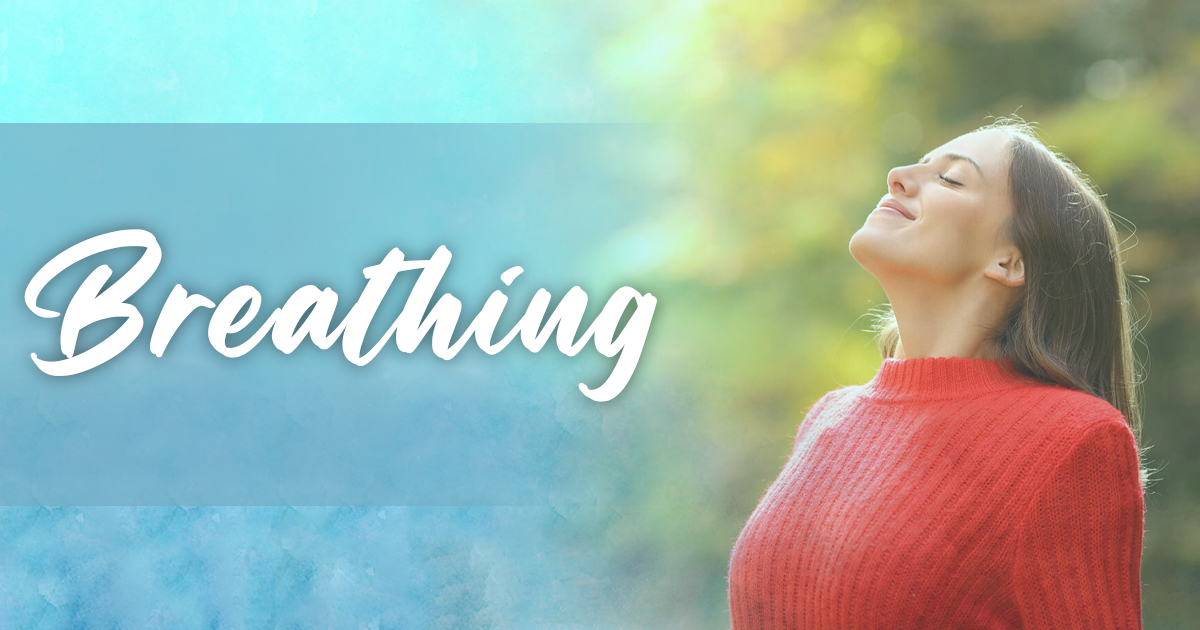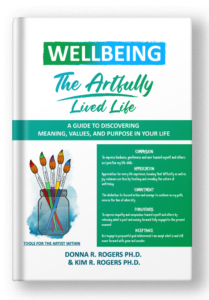Breathwork
Breathing is one of the few functions over which we have conscious control and also works automatically without our attention. This is because our respiration system operates using two separate sets nerve pathways. This allows us to have a unique window into our autonomic (automatic) nervous system. By using our breathing in specific ways, this also allows us to influence functions that we would not normally have control over. We typically think of breathing with respect to its primary function which is to carry oxygen to our cells and organs and remove carbon dioxide waste from our bodies. Although critically important, this is not the only function that breathing serves.
Breathing is also integrated into our nervous systems including our brain and virtually all of our physiology. What this means is that our thinking and emotions can affect our breathing, and our breathing can also affect our mood. If you have ever noticed someone who is anxious, agitated or angry, their breathing is typically rapid, shallow, noisy and irregular. Because breathing is an integral part of the nervous system, by choosing to breath slower, deeper, quieter and more regular, we can influence our mood – that is reduce our anxiety, impulsivity and emotional reactivity that usually accompanies agitation. In other words, we have the ability to calm our thoughts, emotions and behavior and the solution is right under our nose.
Breathing and the nervous system
We have two main branches of our nervous system. These include the central nervous system (CNS) that among other functions is used to consciously control our movements, and the autonomic nervous system (ANS) that automatically controls many of our physiological functions. The ANS also has two branches, the sympathetic branch that activates or speeds us up and the parasympathetic branch that slows us down. In an evolutionary sense, these systems have served us well. For example, when our ancient ancestors were being chased by a tiger, the sympathetic system increased our stress hormones (adrenaline, cortisol, and others) that increased our heart rate, blood pressure, sent blood to the brain and skeletal muscles, and blood sugar which helped us to fight or run. When we were safely in our cave, our parasympathetic system took control increasing functions such as peripheral circulation, digestion and decreasing our heart rate, blood pressure, etc. The problem, however, is that for many of us, the physiological triggers – worries about work, home, finances and family – never go away. As a result, we tend to carry a high sympathetic tone (our activated state is always turned on) which can also lead us to be easily triggered into a more a intense “fight, flight or freeze” response. In fact, many of us don’t know or have forgotten how to really relax and consequently we are unable to maintain a healthy balance between the two branches of our autonomic nervous system.
Breathwork and the heat rate variability
There are several pathways through which breathing can influence our nervous system and can be used to regain balance over the two branches of the ANS. One of these ways is through optimizing our Heart Rate Variability (HRV) which is the variation in our moment-to-moment heart rate. Because the heart rate changes on a fairly short time scale, when we measure our pulse rate it is typically an average over several minutes. When working optimally, our nervous system manages our heart rate similarly to how the cruise control on a car maintains its speed (increasing and decreasing in a smooth and regular fashion). It is no coincidence that the smooth and regular breathing that we have been discussing influences the regularity of our heart rate variation. For most of us and most of the time (especially when we are upset), our HRV resembles someone driving with one foot on the gas and one foot on the brake — and as the passenger of a nervous driver with this habit, we know what that experience feels like.
So, how does this work? The way that our breathing influences our HRV is through a function called the Respiratory Sinus Arrhythmia (RSA) which “connects” our breathing to our HRV. When we breathe in our heart rate increases and when we breathe out it slows down. A typical breathing rate (for most of us) is about 15 breaths per minute (bpm) and higher when we are agitated or upset. By slowing our breathing rate down to about 5 or 6 bpm it will begin to synchronize with the natural and optimal variation in our heart rate (a condition called coherence). Consider, for example, pushing a child on a swing. By timing our “pushes” with the natural rhythm of the swing, we synchronize our effort. Similarly, by slowing down and smoothing out our breathing rate we can, synchronize our breathing with our optimal HRV. You might be wondering at this point, how breathing, HRV, and nervous system balance are connected to our emotion, mood and responses to stress. As turns out, our HRV is one accessible indicator of our nervous system balance. By optimizing our HRV we also tend to better balance both branches of our nervous system and as a result lower our sympathetic tone. This results in lower baseline levels of stress hormones released into our system which also allows us to better manage stress, impulsivity and emotional reactivity.
Breathwork and everyday stress
So, how do we make this work? When learning to play a musical instrument, we practice in order to prepare for a recital. This is similar for breath-work. We practice when we are relaxed so we can remember to use this skill when we feel anxious, worried, frustrated or angry. Do you remember the saying about “taking a deep breath in a tense or difficult situation”? You can learn how to “take a deep breath” for 5, 10, or 15 min or whatever it takes to calm and balance your nervous system. This can change you mood and improve your responses to a challenging situation. In fact, the more you practice breathing slower, deeper, quieter and more regular, the more you can influence and improve your sense of wellbeing.
There are also several tools that can help you to manage your breathing and influence your HRV coherence. These include HRV Biofeedback instruments, breathing pacer apps, and synchronizing your breathing to time by simply counting or listening to the ticking of a clock. Just remember, for the simplest technique — breath in to the count of 6 and breath out to the count of 6. It is beyond the scope of this text to explore the many techniques in the areas of breathwork, yoga, and mindfulness. Nevertheless, many of these methods can allow you to optimize your HRV, balance your nervous system, lower your stress, emotional reactivity, and influence your mood.
Another tool for managing your stress and increasing your well-being
Paying attention to your breath is a fundamental concept in many types of meditation. For example, focusing on breathing is a basic form of mindfulness meditation. Numerous studies over the past decade have shown that the practice of mindfulness allows us to calm our minds, focus our attention and reduce our levels and reactivity to stress. Optimizing our HRV and mindfulness can complement each other and when used together can provide powerful tools for reducing symptoms of anxiety and depression or simply as a means to reduce stress and enhance one’s sense of well-being. One might think of managing our HRV as immediately influencing our physiology (we can practice controlled breathing whenever our circumstance requires) and indirectly managing our stress response and mood. By contrast, we might think of mindfulness as primarily influencing our thoughts and emotions. What we think of as our mind and body, however, are systematically connected in more ways than we can imagine.
Where can I find more information about breathwork, mindfulness meditation and well-being?
Discover the transformative power of mindfulness and unlock a life of balance, harmony, and inner peace. Start a journey to improve your well-being with “WellBeing: The Artfully Lived Life”. This essential guide offers practical steps and techniques to cultivate mindfulness in your daily life. Through over 150 Wellness Exercises and Guided Meditations, this book allows you to tap into the incredible benefits of meditation.
Start your day with a simple yet profound practice that will help you shift your focus from the chaos of the outside world to the calmness within. Don’t let stress, anxiety, or negativity hold you back any longer. Take charge of your life and embrace the power of mindfulness today!


